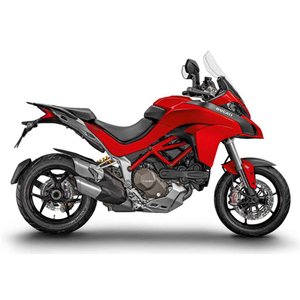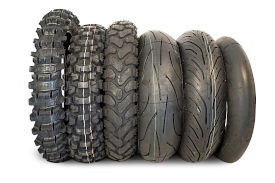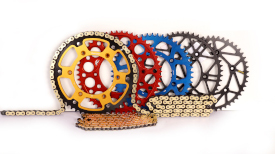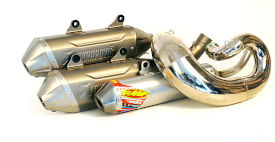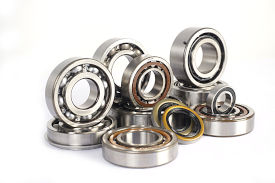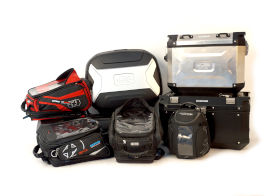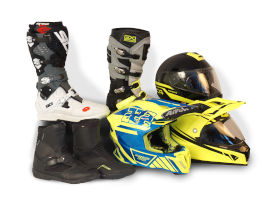Ducati Multistrada 1200 S D Air (2016-2017): A Swiss Army Knife on Two Wheels
Introduction
The Ducati Multistrada 1200 S D Air isn’t just a motorcycle—it’s a declaration of versatility. Designed to blur the lines between sportbike agility and adventure-touring practicality, this Italian machine from the 2016-2017 era remains a benchmark for riders who refuse to compromise. With its groundbreaking D-Air airbag system, adaptive suspension, and a soul-stirring L-Twin engine, the Multistrada 1200 S D Air feels like riding the future, even years after its release. I recently spent a week with one, and here’s why it still deserves a spot on every motorcyclist’s dream list.
Design & First Impressions
Ducati’s design language has always leaned toward the dramatic, and the Multistrada 1200 S D Air is no exception. The signature red livery (the only color option here) pops against the aggressive angles of the LED headlamps and the muscular trellis frame. The bike’s stance is purposeful—the 20-liter (5.28-gallon) fuel tank flares outward, giving it a broad-shouldered profile, while the single-sided swingarm and Y-shaped alloy wheels add a touch of racing pedigree.
The adjustable windscreen and seat (825–845 mm / 32.5–33.3 inches) cater to riders of varying heights, though even at its lowest setting, the seat might challenge shorter inseams. Still, the ergonomics strike a balance between sporty lean and upright comfort, making it equally at home on twisty backroads and 500-mile hauls.
Engine Performance: The Heart of a Predator
At the core of the Multistrada 1200 S D Air lies Ducati’s Testastretta DVT engine—a 1198.4cc (73.13 cu in) L-Twin that’s equal parts refined and ferocious. With 160 HP (116.8 kW) at 9,500 RPM and 136 Nm (100.3 lb-ft) of torque at 7,500 RPM, this powerplant delivers acceleration that pins you to the seat. The ride-by-wire throttle responds with surgical precision, whether you’re feathering through city traffic or cracking it open on an alpine pass.
What’s remarkable is the engine’s duality. Below 4,000 RPM, it purrs like a contented lion, offering smooth, vibration-free cruising. But cross that threshold, and the character transforms—the exhaust note hardens into a metallic snarl, and the horizon rushes toward you with alarming urgency. The 6-speed gearbox shifts cleanly, though the clutch lever demands a firm hand in stop-and-go traffic.
Chassis & Handling: Precision Meets Adaptability
Ducati’s tubular steel trellis frame and 24-degree rake angle give the Multistrada a sportbike-like eagerness to dive into corners. But the real magic lies in the Ducati Skyhook Suspension (DSS). The 48mm USD forks and rear monoshock automatically adjust compression and rebound damping based on riding conditions. Switch from “Urban” to “Sport” mode, and the bike tightens up instantly—the same machine that soaked up potholes minutes ago now feels track-ready.
With 170 mm (6.7 inches) of wheel travel at both ends, rough roads barely register. The Brembo brakes—dual 320mm discs up front with radial-mount 4-piston calipers—deliver staggering stopping power, modulated by a flawless ABS system. The Pirelli Diablo Rosso III tires (120/70-17 front, 190/55-17 rear) offer tenacious grip, though serious off-roaders might swap them for more rugged rubber.
Technology: Innovation You Can Feel
The 2016-2017 Multistrada was a tech showcase. The D-Air airbag system (developed with Dainese) integrates into the riding jacket, deploying in milliseconds during a frontal collision—a feature still rare in motorcycles today. The full-color LCD dashboard is intuitive, offering ride modes, tire pressure monitoring, and even a digital compass.
Cornering LEDs illuminate bends as you lean, a godsend for nocturnal canyon runs. Cruise control, heated grips, and keyless ignition add touring convenience. My only gripe? The menu system requires patience to navigate mid-ride.
Comfort & Practicality
Long days in the saddle reveal the Multistrada’s touring DNA. The seat, while firm at first, supports without causing fatigue, and the wind protection is superb—even at 130 km/h (81 mph), buffeting is minimal. The 20-liter fuel tank translates to a ~320 km (200-mile) range, though spirited riding will drain it faster.
Storage options are limited without aftermarket panniers, but the passenger seat accommodates a tail bag effortlessly. The single-sided swingarm also simplifies chain maintenance—a boon for DIY enthusiasts.
Competition: How It Stacks Up
The Multistrada 1200 S D Air faced stiff rivals in its era:
- BMW R 1200 GS Adventure: More off-road capable and slightly roomier, but the BMW’s boxer engine lacks the Ducati’s top-end thrill. The GS also misses out on cornering lights and adaptive suspension at this price tier.
- KTM 1290 Super Adventure: Brute power (160 HP) matches the Ducati, but KTM’s LC8 engine is rowdier, with snappier throttle response. However, the Multistrada’s tech suite feels more polished.
- Yamaha Super Ténéré ES: Bulletproof reliability and lower maintenance costs, but down on power (110 HP) and electronic sophistication.
The Ducati’s edge lies in its balance—it’s the only bike here that genuinely bridges sport, touring, and tech innovation.
Maintenance: Keeping the Italian Legend Alive
Owning a Multistrada 1200 S D Air requires attention to detail. The Desmodromic valve system needs adjustment every 24,000 km (15,000 miles), a job best left to professionals. Chain maintenance is critical—clean and lubricate every 800 km (500 miles) using high-quality chains from MOTOPARTS.store.
Brake pads wear faster if you exploit the Brembos regularly; sintered pads are a worthwhile upgrade. The oil-cooled engine thrives on synthetic lubricants changed every 12,000 km (7,500 miles).
For those upgrading, consider:
- Aftermarket exhausts: Unleash the L-Twin’s full voice.
- Ergonomic seats: Ideal for reducing fatigue on marathon rides.
- Off-road footpegs and guards: Enhance durability for gravel excursions.
MOTOPARTS.store stocks all essentials, from OEM-spec filters to premium tire options.
Conclusion
The Ducati Multistrada 1200 S D Air isn’t just a motorcycle—it’s a masterclass in engineering ambition. It challenges the notion that specialization is king, proving instead that a bike can excel in multiple realms without dilution. Whether you’re carving mountain passes, commuting through gridlock, or chasing horizons, this Ducati delivers with Italian flair and cutting-edge smarts. Years after its debut, it remains a testament to how far motorcycles can evolve when innovation takes the front seat.
Specifications sheet
| Engine | |
|---|---|
| Stroke: | Four-stroke |
| Max power: | 117 kW | 157.0 hp |
| Max torque: | 136 Nm |
| Fuel system: | Bosch electronic fuel injection, Ride-by-Wire, 56 mm elliptical throttle bodies |
| Max power @: | 9500 rpm |
| Displacement: | 1198 ccm |
| Max torque @: | 7500 rpm |
| Bore x stroke: | 106.0 x 67.9 mm (4.2 x 2.7 in) |
| Configuration: | V |
| Cooling system: | Liquid |
| Compression ratio: | 12.5:1 |
| Emission standard: | Euro 4 |
| Number of cylinders: | 2 |
| Valves per cylinder: | 4 |
| Features | |
|---|---|
| Lighting: | LED headlamp with cornering lights |
| Instruments: | LCD digital display |
| Safety systems: | D-Air airbag system, ABS |
| Adjustable features: | Seat height, windscreen, suspension settings |
| Suspension technology: | Ducati Skyhook Suspension (DSS) |
| Dimensions | |
|---|---|
| Wheelbase: | 1529 mm (60.2 in) |
| Dry weight: | 213 |
| Wet weight: | 236 |
| Seat height: | 825–845 mm (32.5–33.3 in) |
| Overall length: | 2200 mm (86.6 in) |
| Fuel tank capacity: | 20 L (5.28 US gal) |
| Drivetrain | |
|---|---|
| Final drive: | chain |
| Transmission: | 6-speed |
| Maintainance | |
|---|---|
| Rear tire: | 190/55-17 |
| Front tire: | 120/70-17 |
| Spark plugs: | NGK (specific model not provided in data) |
| Chassis and Suspension | |
|---|---|
| Rake: | 24° |
| Frame: | Tubular steel Trellis |
| Trail: | 109 mm (4.3 in) |
| Rear tire: | 190/55-17 |
| Front tire: | 120/70-17 |
| Rear brakes: | Single 265 mm disc, 2-piston caliper, ABS |
| Front brakes: | 2 x 320 mm floating discs, radially mounted 4-piston calipers, ABS |
| Rear suspension: | Fully adjustable monoshock, electronic damping/pre-load adjustment (Ducati Skyhook Suspension), aluminum single-sided swingarm |
| Front suspension: | 48mm fully adjustable USD forks, electronic compression/rebound damping (Ducati Skyhook Suspension) |
| Rear wheel travel: | 170 mm (6.7 in) |
| Front wheel travel: | 170 mm (6.7 in) |



